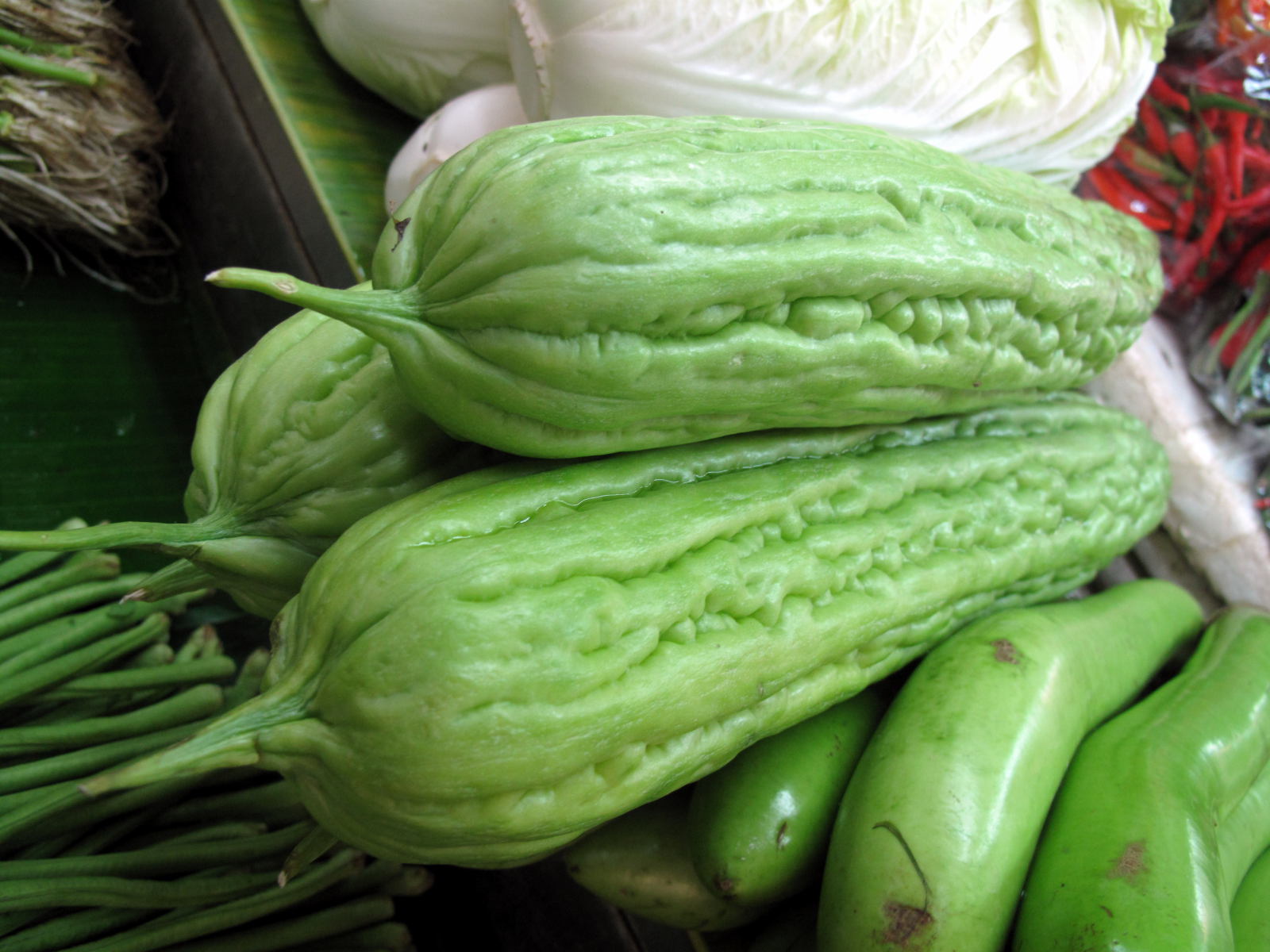Bitter Gourd
The Chinese bitter gourd might best be described as Thai cuisine’s Brussels sprouts. Nobody really likes the taste, but they eat it anyway because it’s supposed to be good for you. The taste truly lives up to its name, so much so that it’s almost intolerable to most westerners. The plant has been known in Europe since the eighteenth century, although it is generally only used as a decorative vine. The gourd is a long light green squash relative with a curiously wrinkled outer skin.

In Thailand, the most common use of the bitter gourd is to hollow it out by removing the seeds and inner membrane, then stuffing it with chopped pork and cooking it in a clear soup (gaeng jood). The meat and soup help to reduce the bitterness, but not always enough to make it palpable to western tastes. To further reduce the bitterness, most recipes recommend boiling the gourds in salted water first.
Thais believe the gourd, and soup made with it, is good for you. They highly recommend bitter gourd soup to anyone who might feel a cold coming on. This seems to follow a folk belief that seems to be prevalent throughout the world: Anything that tastes bad must be good for you. There may be some scientific foundation for at least some of their beliefs. The bitter gourd is high in calcium, phosphorous and vitamin C.